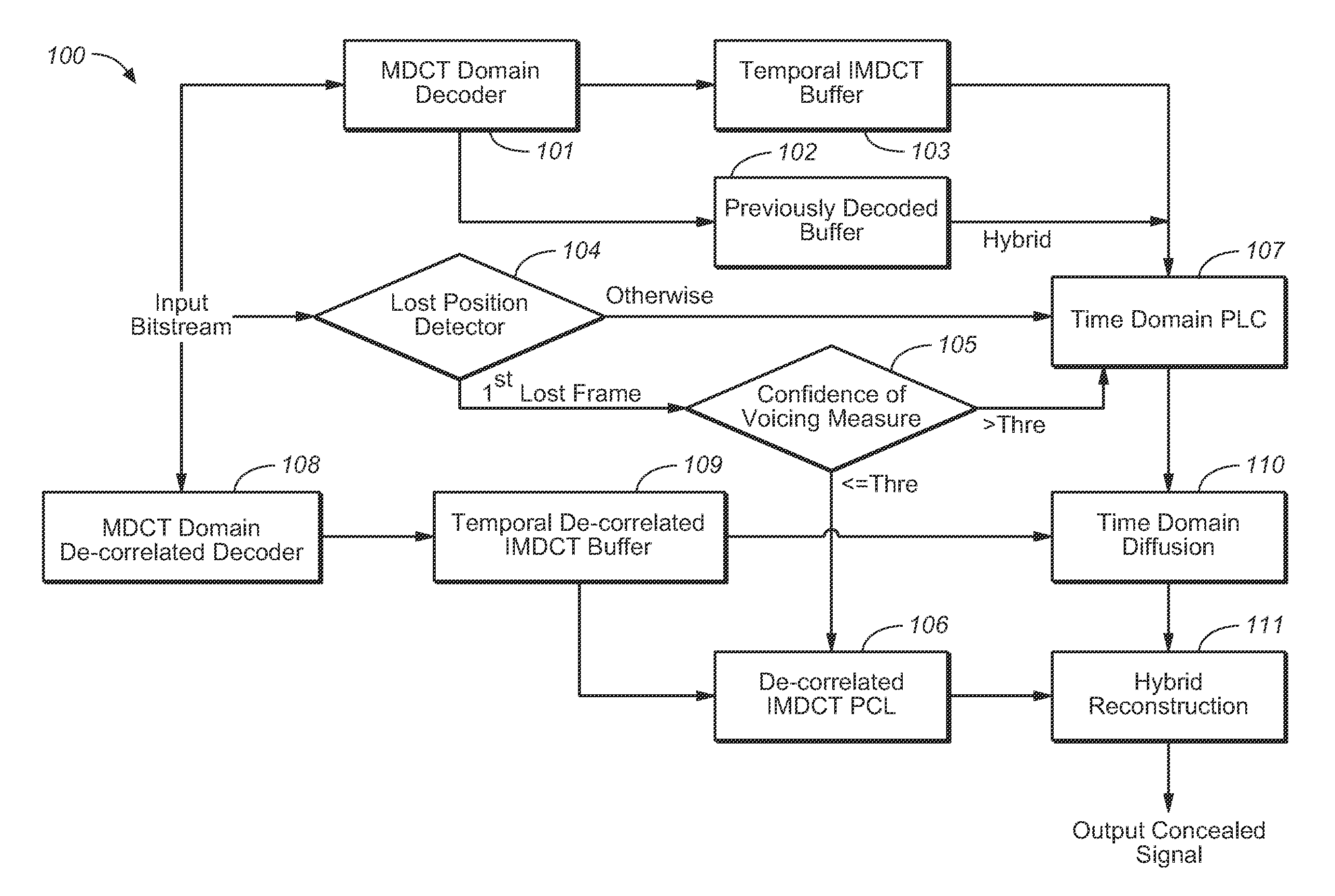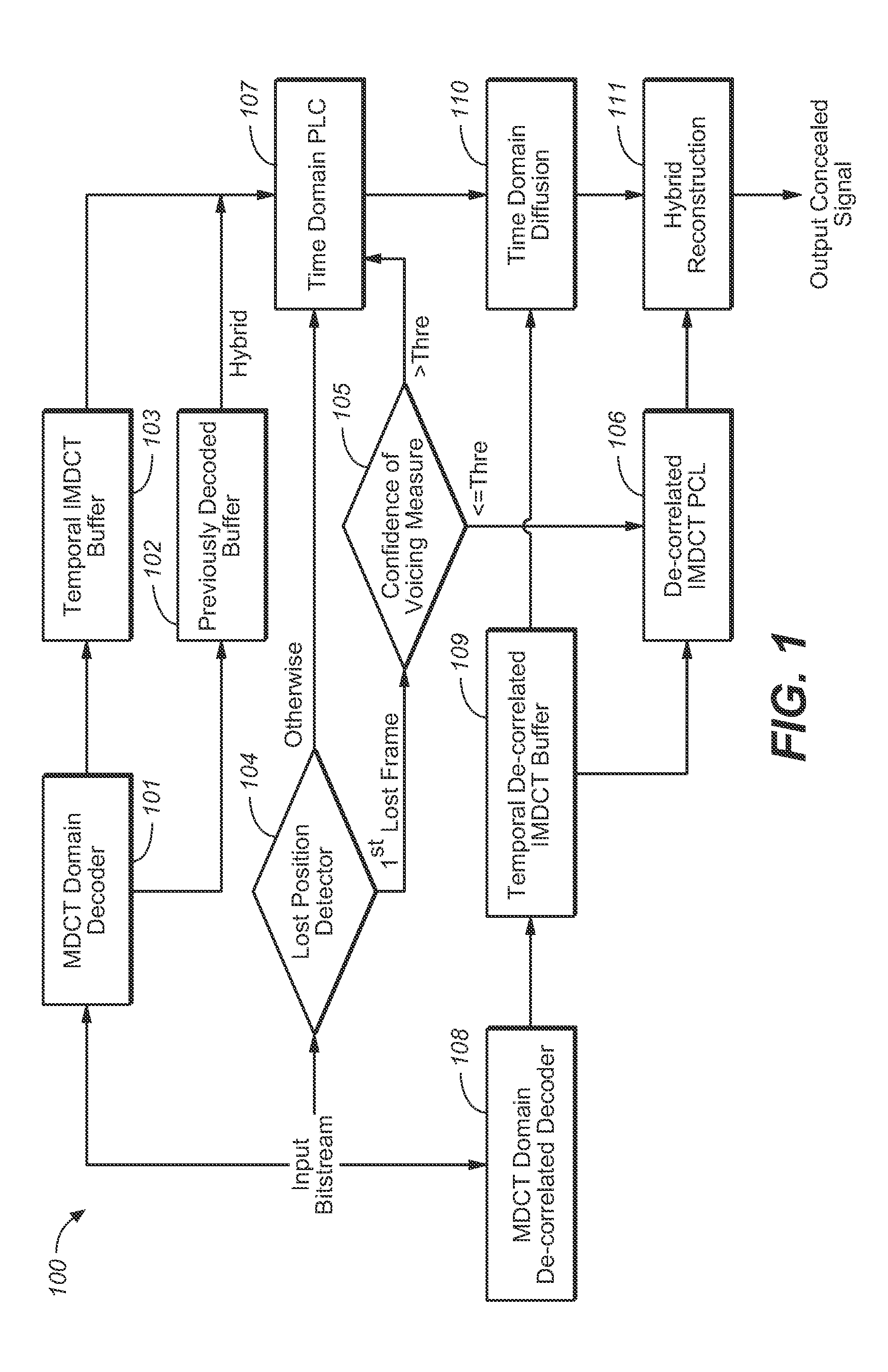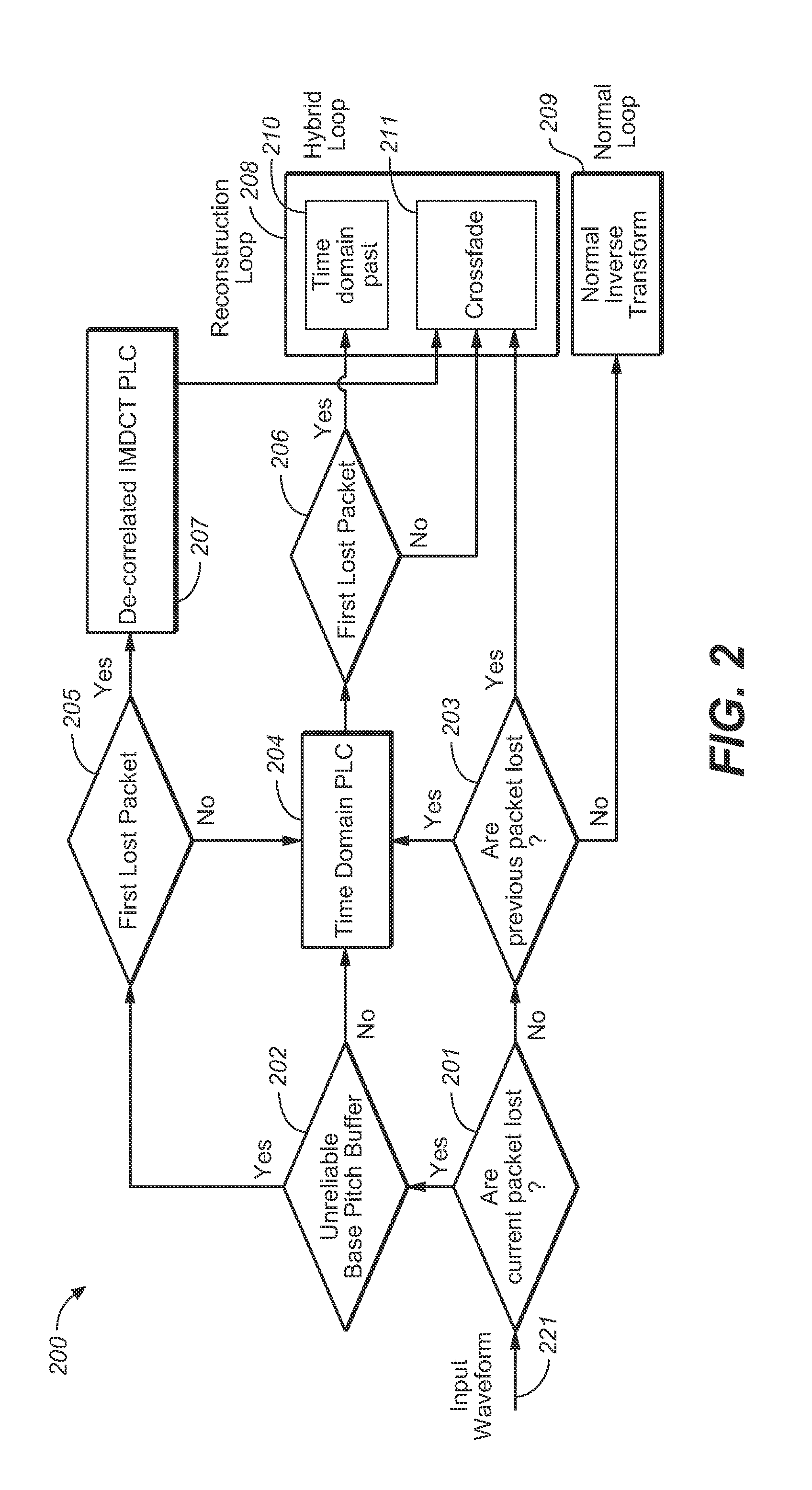Position-Dependent Hybrid Domain Packet Loss Concealment
a hybrid domain and packet loss technology, applied in the field of audio signal processing, can solve the problems of reducing the perceived speech quality of the receiver side, affecting the quality of the audio, and affecting the loss position, and achieve the effect of increasing the loss position
- Summary
- Abstract
- Description
- Claims
- Application Information
AI Technical Summary
Benefits of technology
Problems solved by technology
Method used
Image
Examples
Embodiment Construction
[0045]As outlined in the background section, PLC schemes tend to insert artifacts into a concealed audio signal, notably for an increasing number of consecutively lost packets. In the present document, various measures for improving PLC are described. These measures are described in the context of an overall PLC system 100 (see FIG. 1). It should be noted, however, that these measure may be used standalone or in arbitrary combination with one another.
[0046]The PLC system 100 will be described in the context of a MDCT based audio encoder, such as e.g. an AAC (Advanced Audio Coder). It should be noted, however, that the PLC system 100 is also applicable in conjunction with other transform-based audio codecs and / or other time domain to frequency domain transforms (in particular to other overlapped transforms).
[0047]In the following, an AAC encoder is described in further detail. The AAC core encoder typically breaks an audio signal 302 (see FIG. 3) into a sequence of segments 303, call...
PUM
 Login to View More
Login to View More Abstract
Description
Claims
Application Information
 Login to View More
Login to View More - R&D
- Intellectual Property
- Life Sciences
- Materials
- Tech Scout
- Unparalleled Data Quality
- Higher Quality Content
- 60% Fewer Hallucinations
Browse by: Latest US Patents, China's latest patents, Technical Efficacy Thesaurus, Application Domain, Technology Topic, Popular Technical Reports.
© 2025 PatSnap. All rights reserved.Legal|Privacy policy|Modern Slavery Act Transparency Statement|Sitemap|About US| Contact US: help@patsnap.com



